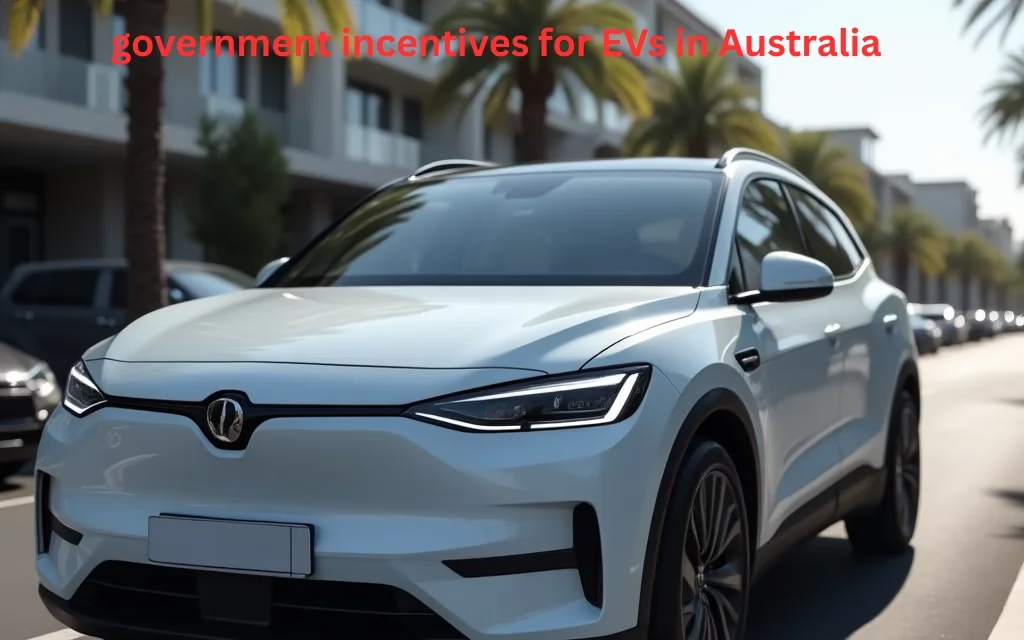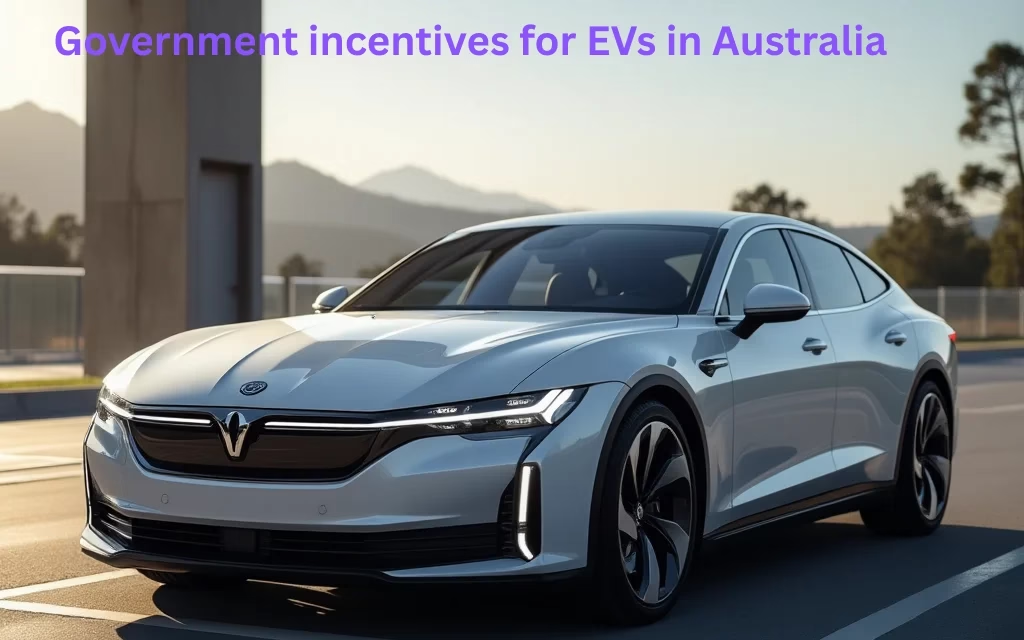As electric vehicles (EVs) become increasingly popular worldwide, government incentives for EVs in Australia are playing a crucial role in making the transition more affordable and accessible. These incentives are designed to reduce the upfront costs, encourage wider adoption, and align with Australia’s broader environmental and energy goals. With a mix of federal and state-level programs, Australia is steadily building a framework to support the electric mobility revolution.
The Need for Government Support in EV Adoption
Australia has historically lagged behind other developed nations in EV adoption due to a lack of infrastructure and higher vehicle costs. To counter this, government incentives for EVs in Australia are essential in making EV ownership more viable for average Australians. These incentives target not just private buyers, but also commercial fleets and public services, thereby expanding the reach of electric mobility.
Federal Government Incentives and Policies
At the national level, the federal government is increasingly stepping up to encourage EV uptake. While Australia currently does not have a nationwide EV subsidy like some countries, federal incentives are being developed as part of the National Electric Vehicle Strategy. These include:
- Fringe Benefits Tax (FBT) exemptions for eligible zero-emission vehicles
- Lower import tariffs for electric vehicles
- Funding under the “Driving the Nation Fund” to support fast-charging infrastructure
Government incentives for EVs in Australia at the federal level are expected to expand as the demand for EVs continues to grow.
State-Based EV Incentives Across Australia
Each state and territory offers unique programs to promote EV adoption. Understanding the regional differences is key to maximising benefits:
New South Wales (NSW)
NSW offers some of the most comprehensive government incentives for EVs in Australia, including:
- $3,000 rebates for eligible new EVs under $68,750
- Stamp duty waivers
- Funding for public and residential charging infrastructure
Victoria
Victoria provides similar incentives to NSW:
- $3,000 subsidies for EVs priced below $68,740
- Registration discounts
- Support for fleet conversions and charging infrastructure
Queensland
Queensland is also advancing its EV-friendly approach:
- Up to $6,000 in rebates (including low-income top-ups)
- Discounted registration and stamp duty
- The QFleet Electric Vehicle Strategy to transition government fleets to EVs
South Australia (SA)
SA is offering practical incentives including:
- $3,000 subsidy for EV purchases
- Free registration for three years
- Grants for EV home charger installation
Western Australia (WA)
WA supports EV drivers with:
- $3,500 EV rebate for vehicles under $70,000
- Investment in statewide charging networks
Tasmania, ACT and NT
The ACT offers zero stamp duty and two years of free registration, while Tasmania provides free stamp duty. The Northern Territory has begun rolling out incentives and is focused on building infrastructure in remote regions.
Tax Benefits and Exemptions for EV Owners
One of the standout government incentives for EVs in Australia is the Fringe Benefits Tax exemption. This policy allows businesses to provide EVs to employees as part of salary packages without attracting FBT liability, provided the vehicle price falls below the luxury car threshold. This makes EVs more attractive for fleet use and corporate adoption.
Infrastructure Investment to Support EVs
Incentives aren’t limited to car buyers. Federal and state governments are investing in charging infrastructure through:
- The Future Fuels Fund
- Co-investment programs with private charging networks
- Grants for home and workplace charger installations
Such infrastructure support complements government incentives for EVs in Australia and builds the ecosystem needed for widespread EV use.
EVs and Environmental Policy Goals
Australia has committed to net-zero emissions by 2050. Supporting EV adoption is central to achieving that goal. By reducing greenhouse gas emissions from transport, government incentives for EVs in Australia are a cornerstone of clean energy policies. They also encourage technological innovation and create new job opportunities in clean industries.
Support for Low-Income Households
Affordability remains a concern for many Australians. To address this, some state programs offer additional subsidies for low-income households, making EVs more accessible. These targeted government incentives for EVs in Australia ensure that the benefits of cleaner transport are shared across economic lines.
Programs for Businesses and Fleets
Businesses are significant contributors to Australia’s transport emissions. Governments are encouraging fleet electrification by offering:
- Tax advantages
- Access to grants for vehicle and charger purchases
- Pilot programs to demonstrate operational cost savings
Fleet-focused government incentives for EVs in Australia are key to driving down commercial transport emissions.
Second-Hand EV Market Support
With the growing number of new EVs, a second-hand market is beginning to emerge. Some government programs now consider supporting this market through:
- Lower stamp duty on used EVs
- Certification and battery health programs to boost buyer confidence
- Financing schemes for used EVs
Developing the pre-owned sector ensures that government incentives for EVs in Australia have long-term, inclusive effects.

Public Awareness and Education Campaigns
Education is crucial for broader adoption. Several state governments have launched campaigns to:
- Inform the public about EV incentives and benefits
- Correct misconceptions about charging and range
- Promote available government resources
These campaigns are a hidden but powerful part of government incentives for EVs in Australia, helping to remove social and psychological barriers to adoption.
Green Vehicle Targets and Mandates
Governments are also setting aggressive EV adoption targets. For example, the ACT aims for 80-90% of new vehicle sales to be electric by 2030. These goals, coupled with incentives, create a roadmap for widespread EV integration. Mandates for government fleet electrification also set a leadership example for the private sector.
Challenges Facing Incentive Programs
Despite their importance, incentive programs face challenges, including:
- Budget limitations
- Inconsistent policies across states
- Limited supply of EVs due to global demand
Policymakers must ensure that government incentives for EVs in Australia remain consistent, transparent, and long-term to maintain consumer confidence.
Comparing Australia’s Incentives Globally
Compared to the US, UK, or Europe, Australia’s incentives are relatively modest. However, the recent increase in state-level support and growing consumer interest suggest that Australia is closing the gap. More aggressive national-level incentives could further boost EV adoption.
Technological Innovation and Domestic Opportunities
Australia has the potential to become a leader in EV technology and production. By supporting battery manufacturing, charging tech, and renewable energy integration, government incentives for EVs in Australia can fuel domestic innovation and reduce reliance on imported vehicles.
Integration with Renewable Energy Systems
EVs charged with renewable energy significantly reduce transport emissions. Governments are now linking EV incentives with solar panel and battery storage grants. This holistic approach strengthens government incentives for EVs in Australia by aligning them with broader sustainability goals.
Future Outlook for EV Incentives
The trajectory for EV incentives in Australia is promising. As public and political support grows, we can expect:
- Expansion of rebates and subsidies
- Investment in high-speed charging corridors
- New federal programs to match state efforts
The next five years are crucial for shaping how effective government incentives for EVs in Australia will be.
Conclusion
Government incentives for EVs in Australia are vital to the country’s transport and environmental future. From tax exemptions and purchase subsidies to infrastructure investment and fleet support, these incentives form a comprehensive strategy to accelerate EV adoption. As Australia continues to invest in clean transport, these policies will ensure the benefits of electric mobility are shared by all Australians.






